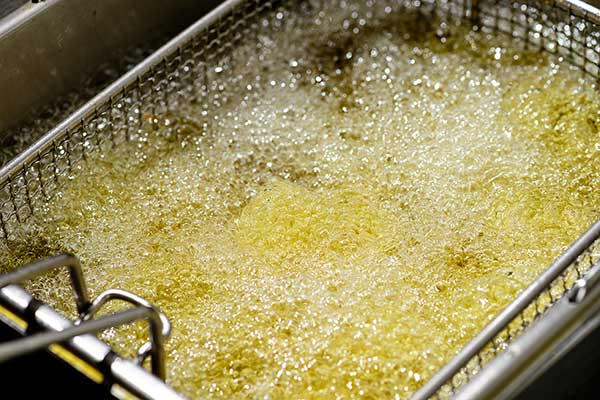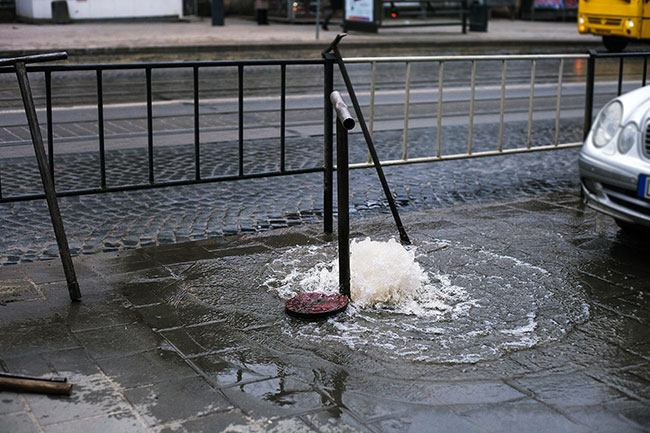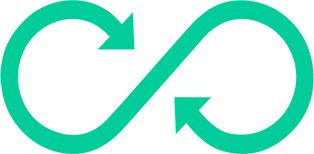Poor grease maintenance harms your business and the wider community.
If you do not dispose of grease properly, it will get into your pipes and the sewer causing giant blockages. These fatbergs cost thousands to clean up and lead to kitchen overflows and cross-contamination. If you’re responsible for a sewer backup and overflow, you will face sanctions and possible closure.
The EPA estimates 23,000 – 75,000 sanitary sewer overflows (not including backups into buildings) each year with grease being a major cause.
The good news is by planning ahead of time; you can follow grease regulations and protect your business.
What businesses need to have a grease trap installed?
Every time you cook, some amount of grease is leftover. If there is any food prep or cooking carried out in the kitchen, you will produce high grease quantities.
From the list below, you can see that pretty much any business that produces fats, oils, and greases in large quantities needs to install a grease trap.
- Any restaurant or take away outlet
- Bakeries and cafes that bake their good on the premises
- Shopping centers with food outlets
- Mobile food outlets
- School and colleges
- Catering companies
- Food manufacturing facilities
- Convenience stores
- Hospital and nursing home kitchens
High volume grease producers such as hotels and hospitals will require a grease interceptor. Low volume food service establishments such as fast food outlets or mobile takeaways need a grease trap.
Restaurant grease impacts
When the grease reaches the drain, it cools and begins to stick to the sides of the pipes and drains. Over time the grease will clog the pipes causing blockages known as fatbergs. These blockages can cause sewage to flood your premises along with the surrounding streets and storm drains.
These blockages and overflows are expensive to fix, and if you are the cause, you could have the bear the cost of the cleanup. Not to mention fines and the possibility of being shut down.
Grease Traps for commercial kitchens
So what exactly is a grease trap?
The most common have two chambers. As kitchen wastewater flows through the first chamber, fatty waste, and grease rise to the top. The clean wastewater then flows into the second chamber and on to the sewer below.
There are different types of grease control devices. Traps are smaller, found near sinks, drains, and food prep areas. Grease interceptors are larger and stored outside for easy access and cleaning.
Whether you need a grease trap or grease interceptor depends on your menu and the amount of grease you produce.
Grease Trap Cleaning
Here’s the kicker:
Grease traps fill up fast. And the fuller they are, the less effective they become. Anything over 25% full hinders the functionality of the trap.
How often you clean yours will depend on the size and amount of grease you produce. Most local authorities recommended cleaning your grease trap every 1-3 months.
If your trap is often more than 50% full when cleaned, you should consider a more frequent schedule. To get a rough idea of the amount of grease you produce, check your trap every day for a week and see how fast the trap is filling.
Pro Tip:
The longer you leave between cleanings, the harder it is to remove the grease, increasing the time and cost to get it cleaned.
Grease Trap disposal
You can clean your grease control device in-house; but, most food businesses hire professional grease haulers. These service providers have specialized trucks that allow them to pump out grease and haul it away for disposal.
If you decide to clean the trap yourself, make sure to log each cleaning and dispose of the FOG in the designated waste bin.
Your Grease Hauler
Your grease hauler will clean the traps and use a pump to remove the contents.
Once your hauler has finished the job, they must provide you a FOG report manifest with details of your service. You need to submit this report to your local water authority as part of their grease control program.
Pro Tip:
Ask your hauler to measure the grease buildup since your last cleaning. If you are following best practices, this should not be above 25%.
Grease Management Best Practices
Indoor grease cleaning best practices
- Create a routine grease trap cleaning schedule – aim for once every week
- Train kitchen staff and ensure best management practices are clear
- Soak up grease from system filters and hoods using wipes and dispose of in the garbage.
- Do not put hot water into the grease trap as this can displace the contents, and once the grease hardens, block your drain.
- Install screens over sinks and floor drain to capture food solids and dispose of it in a food waste bin
- Use low-phosphate content, water-based cleaners.
- Check the roof for signs of oil and grease.
Outdoor grease cleaning best practices
- Use watertight receptacles of sufficient size.
- Locate grease dumpsters and storage containers away from storm drain catch basins
- Cover outdoor grease and oil storage containers
- Ensure that grease and wastewater do not enter the sewer – anything other than stormwater entering the catch basin is considered a spill.
Your grease regulator
Your water authority runs a FOG program that sets the regulations for businesses producing a large amount of grease. These regulations can vary based on your location, but they follow best practices and are easy to put in place.
Regulators often carry out inspections to make sure local businesses comply. But if you submit all your cleaning reports and showcase that you follow a regular cleaning frequency, you will avoid many of these.
What to expect during grease inspections
Before the inspector begins, they should provide you with identification and explain the process. They will then take photos to highlight instances of compliance or non-compliance
Feel free to ask any questions about the process or any previous communications you have had. Also, don’t be afraid to request that the inspector put on personal protective equipment (i.e., gloves & hairnet).
The inspector will likely take photos to highlight instances of compliance/non-compliance.
- That you are maintaining your grease removal equipment and that records of this maintenance are being kept on site. This should include your weekly, monthly, and yearly maintenance, removal of waste oil, and any desludging operations carried out.
- That you have stored the collected FOG in a secure area, isolated from any storm drains, and you have disposed of waste oil or food waste using a permitted and licensed waste removal contractor.
- That you are using a sink connected to the grease trapping equipment when cleaning exhaust filters.
- That you are employing the best practices in FOG management and that all new staff is trained appropriately in these practices. It’s essential that you continually check your operations to ensure that best practices are being employed at all times.
- That you have utilized appropriate signage to ensure that there is no contamination of food during prep, i.e., washing vegetables.
- That all your grease traps have a sampling tap to sample trade effluent.
- That the use of under sink food macerators/food grinders for processing and discharging waste food to the drainage system is not occurring.
- That the use of microbial, enzymatic, biological, or chemical degreasers is not happening.
- That you have paid all your annual license fees in full.
How SwiftQuote Helps
At SwiftQuote, we run an online marketplace that connects businesses like yours with local service providers. Our goal is to make it as simple as possible to find and compare trusted local professionals.
Through the app, you can submit a job request, and local pros will bid on your service, providing a quote to complete your request. You can also search pros in your area and select based on reviews, price, and other requirements.
SwiftQuote also tracks your compliance services and ensures you never miss a deadline again.










